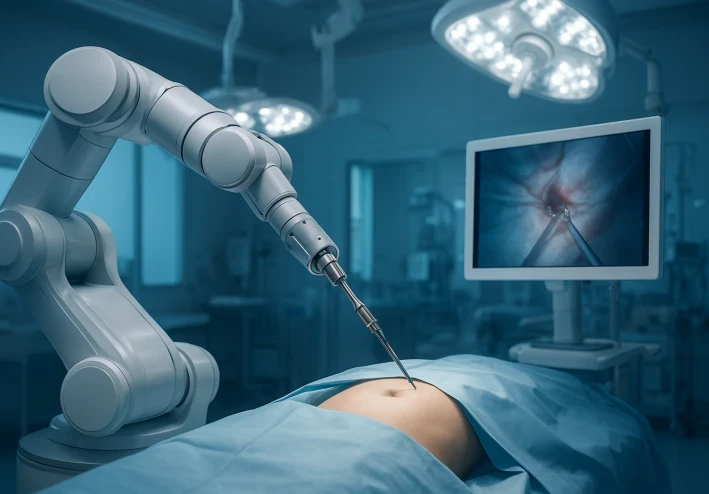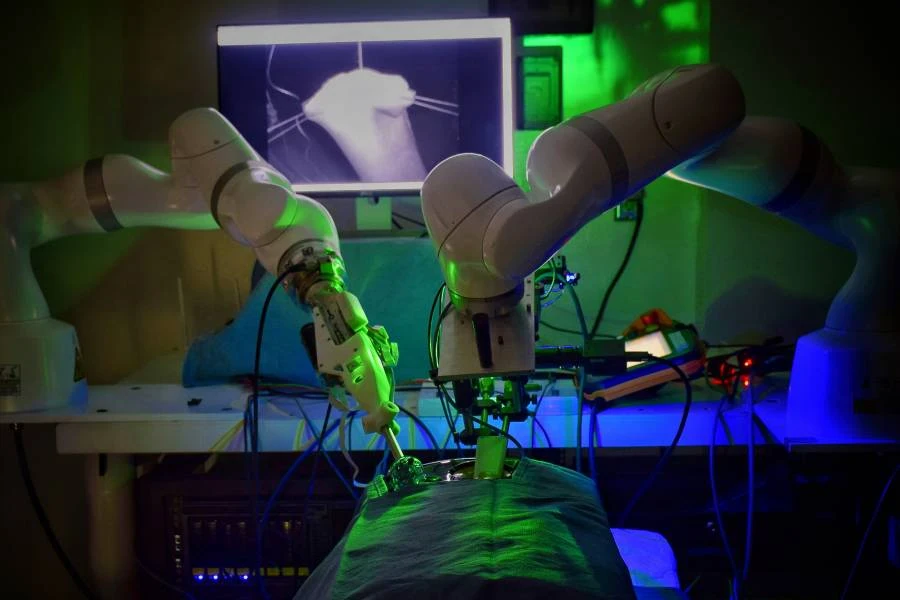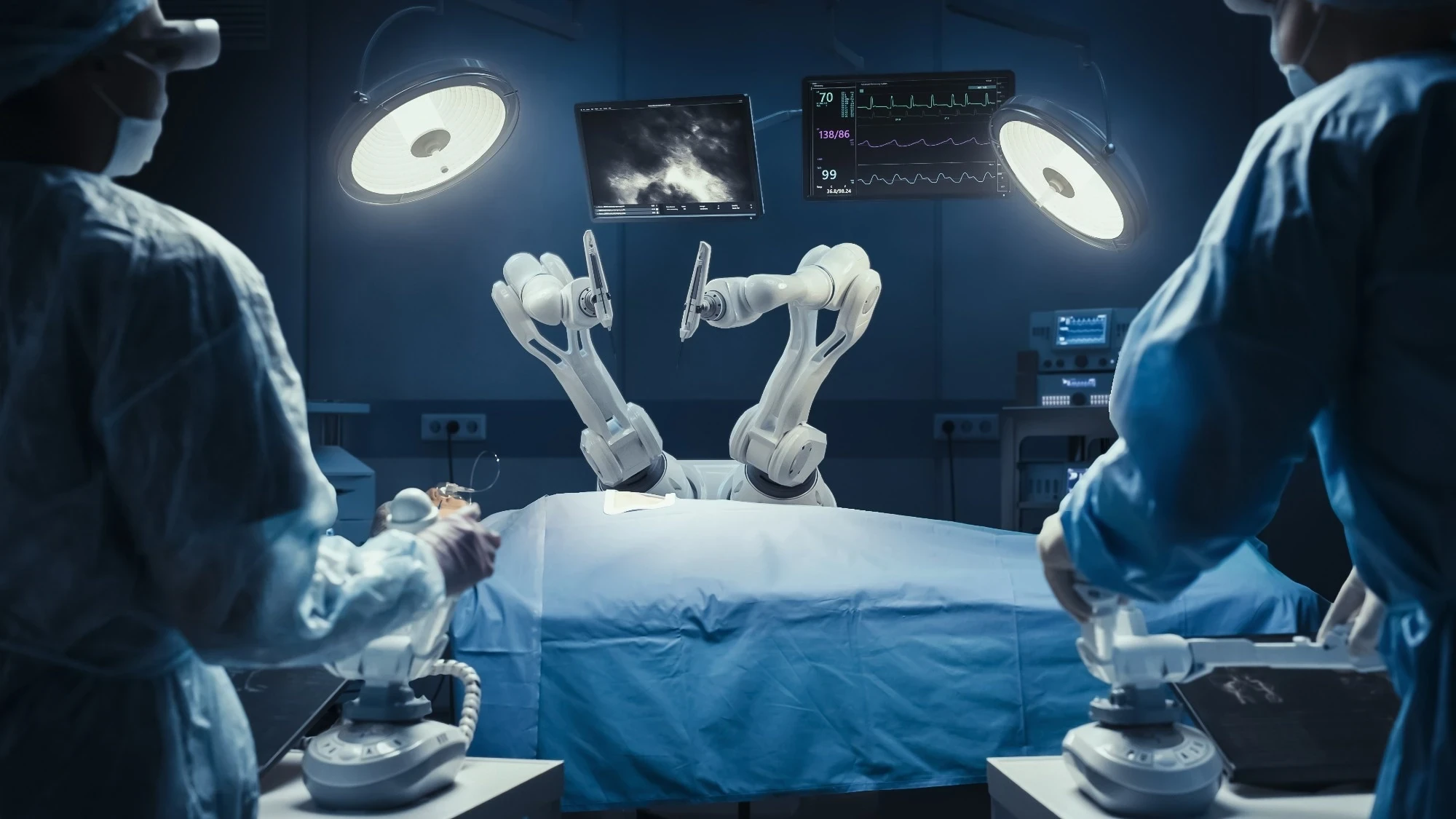
Autonomous Surgical Robots: A Leap Forward in Healthcare
Introduction
The field of medicine is constantly evolving, driven by technological advancements that push the boundaries of what's possible. One of the most groundbreaking innovations in recent years is the emergence of autonomous surgical robots. These intelligent machines are poised to revolutionize surgical procedures, offering unprecedented precision and potentially reducing human error. Recent reports highlight a significant milestone: a robot successfully performed a critical and risky step of a surgical operation without any human assistance. This achievement marks a pivotal moment in the journey towards fully autonomous surgery, promising a future where complex medical interventions are safer and more efficient.
The Breakthrough: Autonomous Precision

The recent success of an autonomous surgical robot in performing a high-risk surgical step without direct human intervention is a testament to the rapid advancements in artificial intelligence and robotics. This particular operation, often challenging even for experienced human surgeons, involved delicate maneuvers that required extreme precision. The robot, guided by sophisticated AI algorithms, executed the procedure flawlessly, demonstrating a level of accuracy that could significantly minimize complications and improve patient outcomes. This achievement is not merely a technological marvel; it represents a paradigm shift in how we approach surgical care. It suggests a future where robots can handle the most intricate parts of an operation, freeing human surgeons to focus on strategic decision-making and managing unforeseen circumstances. The implications for patient safety and surgical efficiency are immense, paving the way for more accessible and standardized high-quality care globally.
The Technology Behind the Triumph
This groundbreaking achievement is powered by a confluence of advanced technologies, primarily artificial intelligence (AI), machine learning (ML), and sophisticated robotic engineering. The robot's ability to perform complex surgical tasks autonomously stems from extensive training on vast datasets of surgical procedures, often involving hours of video footage from human surgeons. This training allows the AI to learn intricate movements, identify anatomical structures, and adapt to variations in patient physiology. Furthermore, advanced sensors provide real-time feedback, enabling the robot to make precise adjustments during the operation. The integration of computer vision allows the robot to 'see' and interpret the surgical field with unparalleled clarity, surpassing human visual capabilities in certain aspects. This technological synergy results in a system capable of executing tasks with a level of consistency and accuracy that is difficult for humans to maintain over long periods, especially in high-stress environments.
Benefits and Future Implications

The successful autonomous surgical intervention heralds a new era in healthcare with numerous potential benefits. Firstly, it promises enhanced precision and reduced invasiveness, leading to faster recovery times and fewer post-operative complications for patients. Secondly, it could democratize access to high-quality surgical care, particularly in remote or underserved areas where skilled surgeons are scarce. Robots could perform routine or complex procedures under remote supervision, extending the reach of medical expertise.
Expanding Horizons: Accessibility and Collaboration
Thirdly, it offers a solution to surgeon fatigue and burnout, allowing human professionals to focus on more strategic and less repetitive aspects of their work. The future of surgery may involve a collaborative approach, where human surgeons and autonomous robots work in tandem, each leveraging their unique strengths to achieve optimal patient outcomes. This innovation is not about replacing human surgeons but augmenting their capabilities and expanding the horizons of medical treatment.
Conclusion
The recent breakthrough in autonomous surgical robotics is a monumental step forward for healthcare. It underscores the transformative potential of AI and robotics in improving patient care, enhancing surgical precision, and expanding access to life-saving procedures. While the path to widespread adoption of fully autonomous surgical systems is still unfolding, this achievement serves as a powerful indicator of the incredible progress being made. The collaboration between human ingenuity and artificial intelligence is set to redefine the landscape of modern medicine, promising a future where surgical interventions are safer, more efficient, and universally accessible.






































